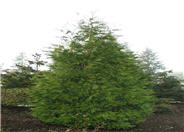
Common name:Incense Cedar
Botanical name:Calocedrus decurrens
The cedar is an attractive, stiff, narrow evergreen tree which has a columnar growing pattern and maintains a central leader. The foliage is comprised of scale needles, while the coarse bark has an attractive cinnamon red-brown coloring. The cedar retains its color in winter and under good cultural conditons, will maintain its foliage to the ground. It serves as an effective screening evergreen, and contrasts well with Maples and other deciduous trees and flowering plants.
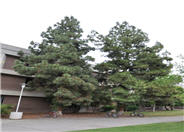
Common name:Canary Island Pine
Botanical name:Pinus canariensis
This graceful, slender-growing pine has a pyramidal form to about 70'. Its needles are long and drooping in bundles of 3. The foliage is a blue-green color, maturing to a dark green shade. Needles can grow to 12" long. Flowers are insignificant. Cones appear in the spring.
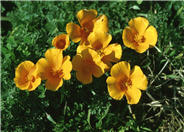
Common name:California or Golden Poppy
Botanical name:Eschscholzia californica
This small annual (sometimes acts as a perennial) plant will grow to less than 1' tall and has light, small blue-green leaves with gold and orange flowers that bloom in spring and summer.
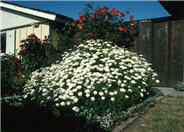
Common name:White Lady Marguerite
Botanical name:Chrysanthemum frutescens 'White Lady'
This annual perennial has bright green foliage and produces an abundance of round, pure white flowers.
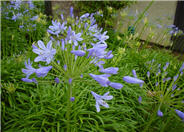
Common name:Lily of the Nile
Botanical name:Agapanthus praecox ssp. orientalis
This evergreen shrub will grow about 3' tall and has large green leaves with blue flowers that bloom in spring and summer. It will grow in all soils but prefers loam soil. It can be grown in sun or shade. Lily of the Nile prefers a moderate amount of water; established plants have low water use.
In the natural world the endless cycle of birth, growth, decay, death and rebirth flows throughout the seasons. Plants die, leaves fall and new growth springs up in its place. Nothing is lost and the fallen leaves and dead plants decay into the soil, enriching it for the next generation of growth.
Click in the green box for more information
Click in the green box for more information
Designer:
Photographer: GardenSoft
Incorporate compost 6" into your soil to retain water, reduce compaction, feed earthworms, and provide valuable nutrients to your plants.
Drip and other smart irrigation delivers water directly to roots, allowing no excess water for weeds.